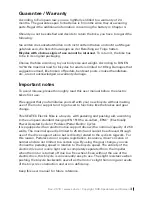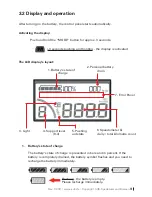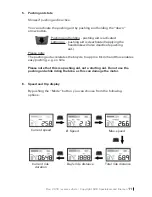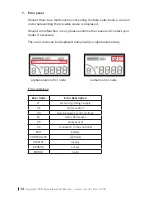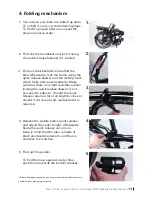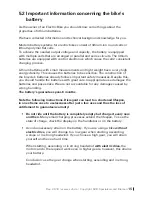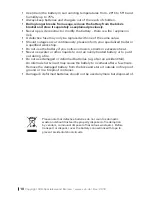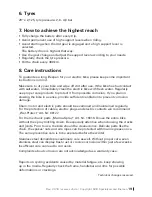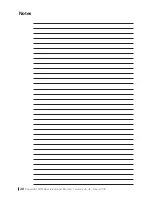
Rev. 2018 / www.svb.de / Copyright SVB-Spezialversand Bremen
17
Maintenance:
Clean the lithium battery with a damp cloth. Please regard the general safety
notes. Pay special attention to dusty/sticky stainings in the area of the electric
connectors. Here, current leaks can occur and lead to draining of the battery.
Make sure that no water can enter the switch and keep the battery chamber dry.
Transport:
Due to the low flashpoint
*
of the lithium part, lithium batteries are classified as
part of the category hazardous materials (flashpoint lithium = 170° C).
The transport of lithium batteries by land (car, bus, etc.) should be executed in a
stable container. The battery connectors are to be secured from possible short
circuits. During transport the container should protect the battery from vibrations,
heavy collisions or deformation. The container should be stored in a cool place in
the vehicle and be exposed to neither sun nore rain.
The transport of big lithium batteries
*
by air partly demands strict safety
precautions. You can get more information from your airline.
*
Batteries with more than 8 gramme of lithium count as “big“. Depending on
the battery‘s performance (watt-hours) it is possible to conclude the amount of
lithium. 100 Wh equate to approx. 8 gramme of lithium. You can calculate the
value of your lithium battery by multiplying the ampere-hour value with the
nominal voltage. (e.g. 8,7Ah x 36 V = 313 Wh; equates approx. 25 g lithium).
General safety notes
•
Never short-circuit the PLUS and MINUS contacts on the charger or the
main contacts on the backside of the battery.
•
Never discharge the battery over the charger‘s contacts.
•
Do not charge the battery over the main contacts on the backside of the
battery.
•
Keep sufficient distance from strong heat sources or open fire.
•
Do not expose the batteries to strong vibrations, collisions or high pressure.
•
Use the battery under mostly dry circumstances.
•
Make sure that no rain or splash water can enter the switch or the
connector area.
•
The main contacts on the backside of the battery should never be exposed
to rain or water of any kind.
•
Intruding water, saltwater or similar liquids can lead to a wrong
charging current / a wrong charging voltage.
In the worst case the battery could overheat, catch fire or explode.

